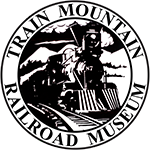Train Mountain hosts
the Train Mountain Railroad Museum
We are presently in need of volunteers, donors, and grant funds to help with preserving and restoring our collection.
Our museum features a self guided walking tour that is open to the public
7 days a week between the hours of 9 am and 3 pm local time.
Special arrangments are available for groups.
The museum has the world's largest collection of Cabooses (37). The museum concentrates on the Southern Pacific Railroad, the Great Northern Railroad and their successors. Also represented are the logging railroads of Klamath County and the former Oregon, California, & Eastern Railroad (OC&E).
The museum has an exhibit of snow fighting equipment used by the Southern Pacific in the Cascade mountains and by the OC&E.
A collection of smaller items are being organized into interpretive displays that will explain the skills and tools used to run a railroad yesterday and today.
- Self Guided Walking Tour Map
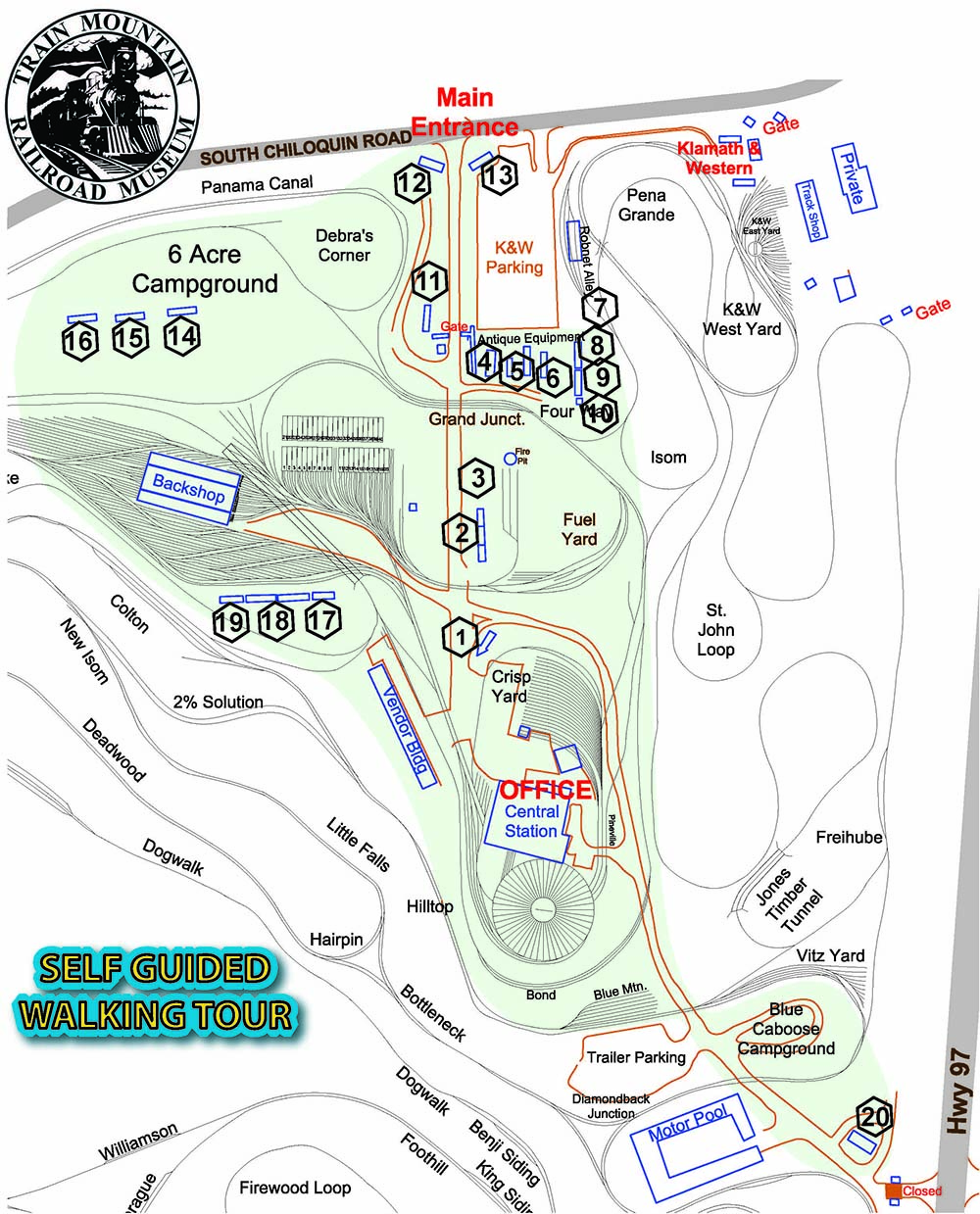
Each number represents a piece of equipment on the Tour. - Self Guided Walking Tour Guide
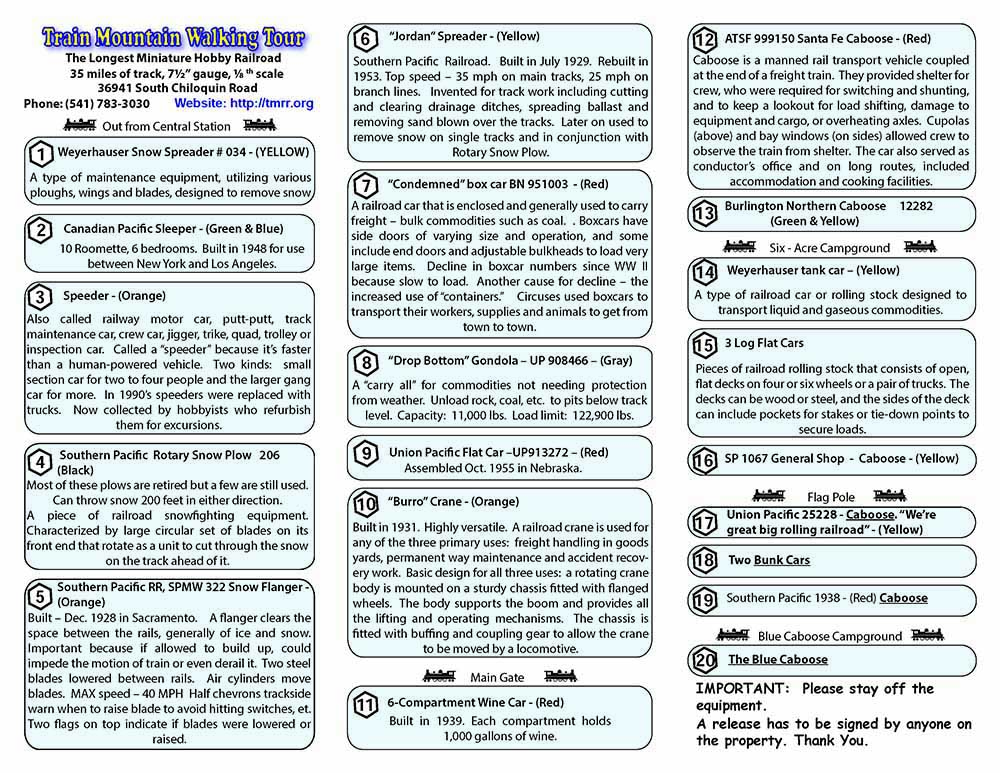
Each number represents a piece of equipment on the Tour.
Full Sized Rail Equipment includes :
- (13) CABOOSE BN #12282
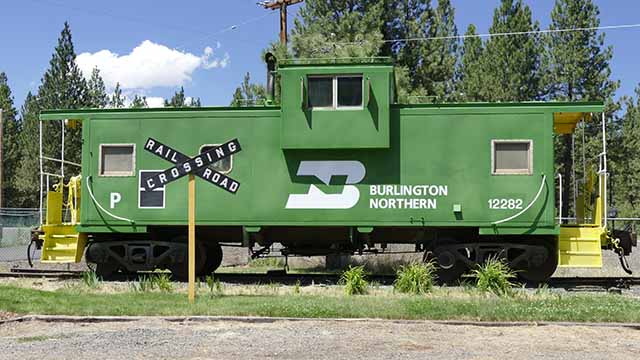
One of the two Cabooses at the Train Mountain main entrance. - CABOOSE BN #12267
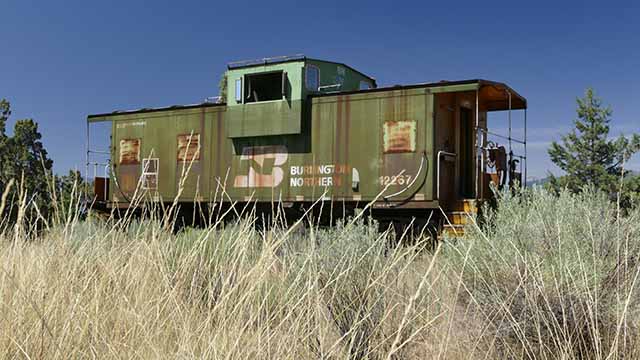
In need of restoration - (20) COLUMBIA & COVITZ #5
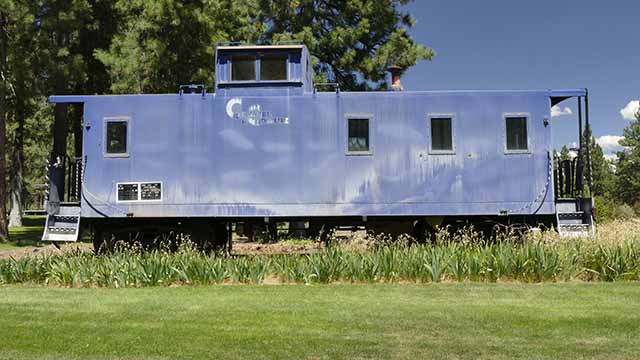
The Blue Caboose. - CABOOSE DRGW #01431
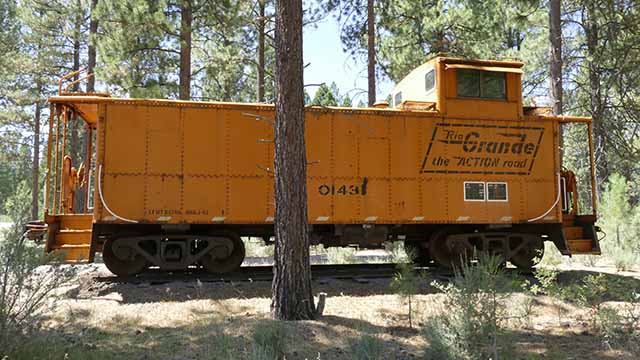
In need of restoration - CABOOSE MOPAC #13034
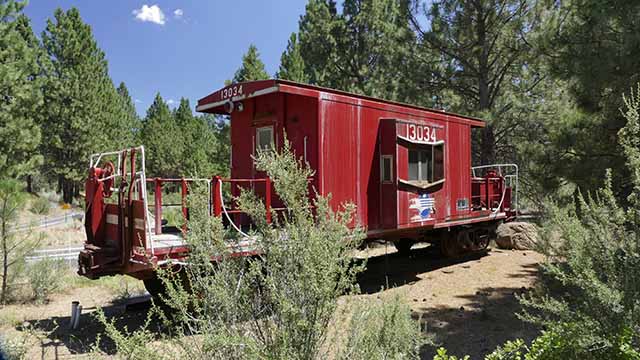
In need of restoration - CABOOSE WP #468
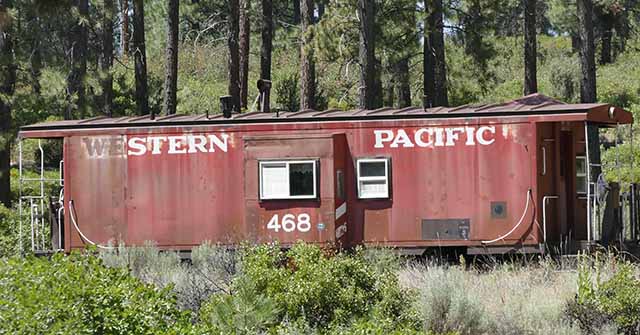
In need of restoration - (17) CABOOSE UP #25228
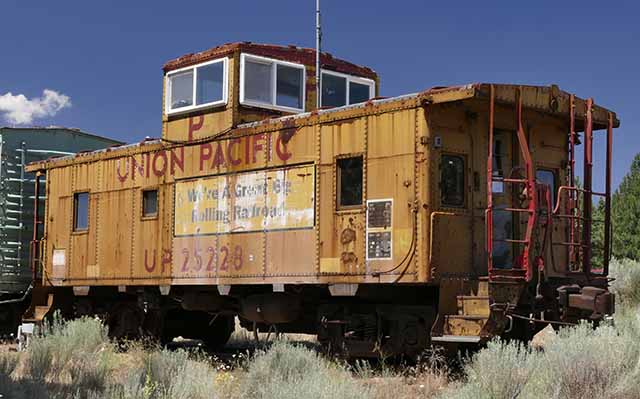
Located near the main yard - CABOOSE UP #25485
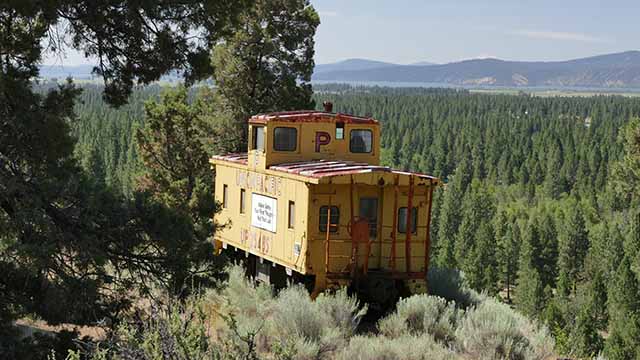
In need of restoration - (K&W) CABOOSE SP #4753
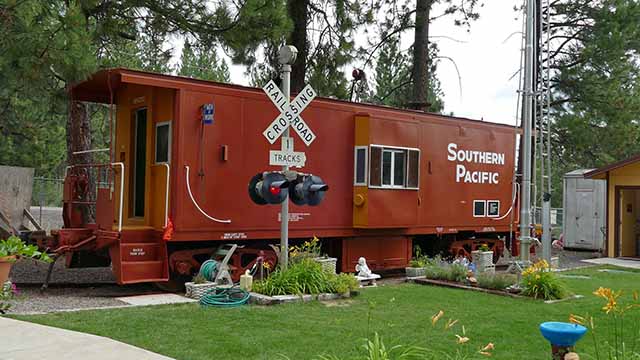
Located at the Klamath & Western Division of Train Mountain. - CABOOSE SP #4755
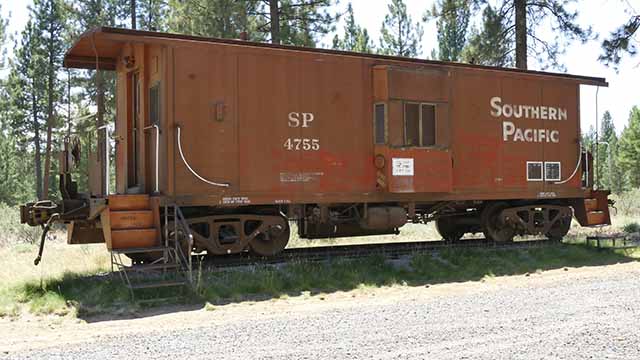
Located at the south end of Train Mountain. - (12) CABOOSE ATSF #999150
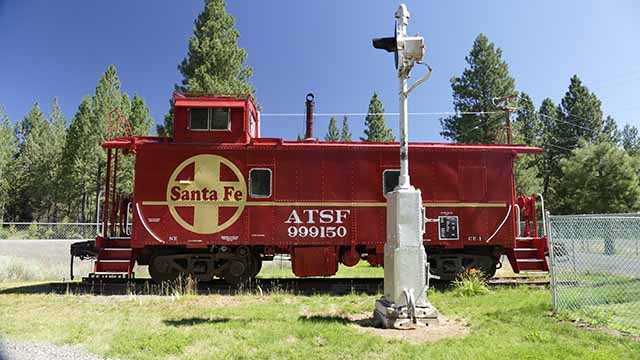
ATSF 999150 Santa Fe Caboose - (Red)
Caboose is a manned rail transport vehicle coupled at the end of a freight train. They provided shelter for crew, who were required for switching and shunting, and to keep a lookout for load shifting, damage to equipment and cargo, or overheating axles. Cupolas (above) and bay windows (on sides) allowed crew to observe the train from shelter. The car also served as conductor's office and on long routes, included accommodation and cooking facilities.
One of the two cabooses at the Train Mountain main entrance.
Restored in 2013 - CABOOSE ATSF #999209
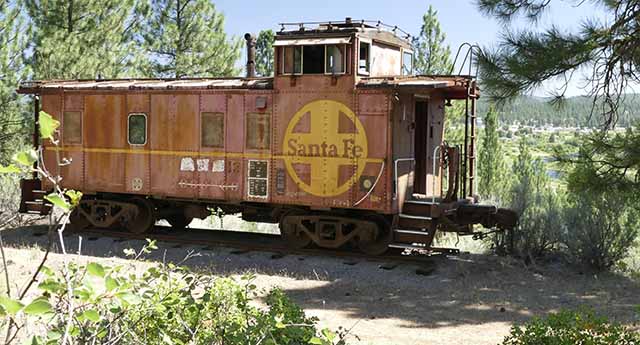
In need of restoration - (16) CABOOSE WEYCO #2
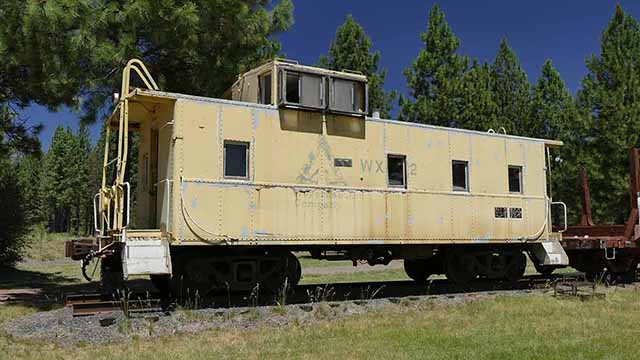
Originally SP 1067. Later aquired by Weyerhauser
Caboose Collection
CABOOSE ALASKA #1092
CABOOSE BN #12236
CABOOSE BN #10591
CABOOSE DRGW #01431
CABOOSE SMVRR #200
CABOOSE UP #25566
CABOOSE SP #1260
CABOOSE SP #1861
CABOOSE SP #1938
CABOOSE SP #1950
CABOOSE SP #1952
CABOOSE SP #1967
CABOOSE SP #4758
CABOOSE ATSF #999019
CABOOSE ATSF #999036
CABOOSE ATSF #999278
CABOOSE ATSF #999270
CABOOSE ATSF #999389
CABOOSE ATSF #999491
CABOOSE ATSF #999547
CABOOSE ATSF #999740
CABOOSE ATSF #999742
CABOOSE ATSF #999747
CABOOSE ATSF #999043
CABOOSE WEYCO #WX082
- (2) SLEEPER CAR NCL#2089 -- Lettered CN
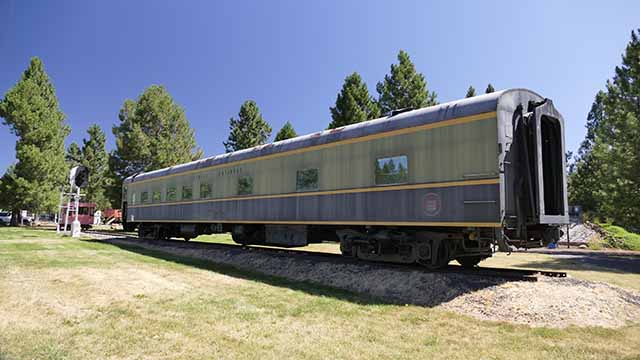
10 Roomette, 6 Bedroom Sleeping Car "Chicopee River"
This style car was first built by the Budd Company and entered service in April 1948 on the new streamliner "California Zephyr. It was designed to sleep 22 passengers, extra fare required in addition to the coach fare. This type sleeping car was very popular after World War Two being built in large numbers for new post-war streamlined passenger trains ordered by America's Railroads.
This car is one of three built by the Pullman-Standard Company in December 1948 for transcontinental service between New York City, NY and Los Angeles, Ca. It was handled on the New York Central's "20th Century Limited" to Chicago, Ill and then on the Sante Fe's "Chief" on to Los Angeles. Original colors were the two tone gray of the New York Central Railroad.
After three years on this route, the car was transferred to New York City-San Francisco, Ca service routed over the New York Central / Milwaukee Road / Union Pacific Railroad through Chicago.
Retired by by the Pullman Company in 1958 and sold to the Canadian National Railroad and became their "Pembina River".
Retired for a second time in 1970 and ultimately being purchased and moved by Mr. Ed St. Johns, founder of the "Over the Hill Live Steamers" to its current location. - (7) BOX CAR BN #951033
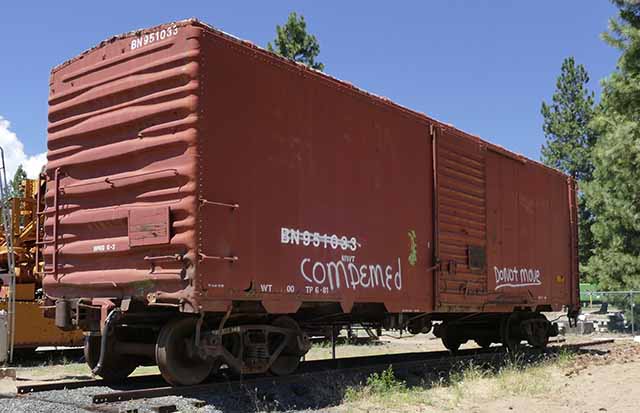
Burlington Northern 40 foot Boxcar 951033
Built in January 1951 at the Great Northern Railway's St. Cloud, Mn. shops.
Originally numbered GN 19689, re-numbered to BN 131689 after the March 1970 merger that formed Burlington Northern, Inc. Retired from revenue service and again renumbered to BN 951013 for company service.
The 40 foot, 50 ton boxcars were the workhorse of the freight car fleet until made obsolete by longer, higher capacity boxcars as seen today. This car had a capacity of 55tons with 3775 cubic feet of space.
Used for general merchandise service, less than carload service and even used to haul grain during harvest before those commodities started moving in covered hoppers. To contain the grain within the car, temporary "grain doors" made from plywood or metal strap, reinforced cardboard covered the door opening. - (18) CREW CAR UP #906l0l
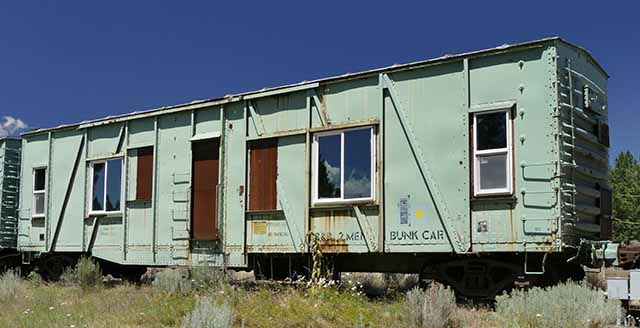
Maintenance away Bunk Car. - (18) CREW CAR UP #907315

Maintenance away Bunk Car. - (10) BURRO CRANE Model 30
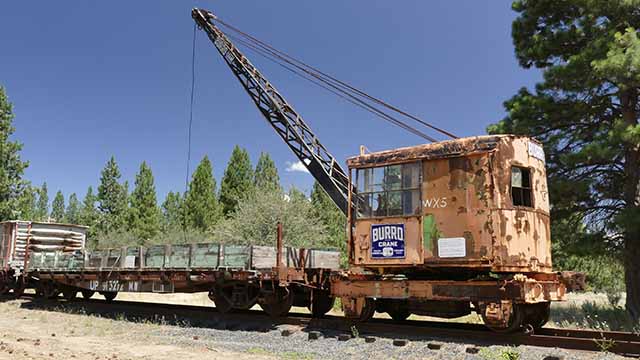
"Burro" Crane - (Orange)
Model 30 Burro Crane, serial number 72, built in January 1931 by the Cullen-Friestedt Company, Chicago, Ill.
Nicknamed Burro after the small donkey which was a "beast of burden". Burro Cranes were highly versatile and could work with a clamshell bucket, hook magnet, dragline bucket and rail or tie tongs.
Quick maneuverability, fast travel speeds ands heavy drawbar pull of Burro Cranes gives them a wide range of utility, more work capacity and greater operating economy.
There were four models available being the model 15a, model 30, model 40 and later a model 50.
The model 30 had a lift capacity of 15,000 lbs at 10 ft radius, travel speeds 1.24 to 22 MPH, maximum drawbar pull of 7500 lbs and single line pull of 12,000 lbs.
These cranes have been mostly replaced with hi-rail gear equipped boom trucks which are more versatile.
Original owners of this crane has been lost to history. - (9) FLAT CAR UP#913272
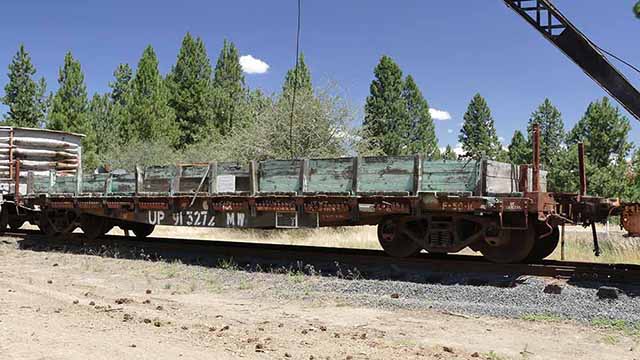
Union Pacific Railroad Flatcar 913272
Assembled in October 1955 at UP's Omaha, Nebraska Shops.
The car body is a one piece steel casting by General Steel Casting Corp.
The UP shops completed the car by adding trucks, couplers, brakes and wooden deck.
Class F-50-16 consisted of 50 cars that were modified in 1963 into 25 cars consisting of two units permanently coupled together. These 42ft 6in, 50 ton singles made an 88ft, 100 ton capacity car specially equipped to haul farm machinery.
The 2 unit sets were broken up when made obsolete by longer, higher capacity flatcars. This car was retired from revenue service and used in company service until donated in 2010 by Union Pacific RR. - (8) GONDOLA UP#908466
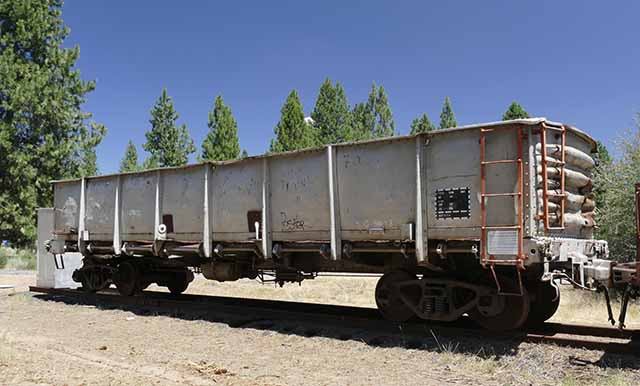
"Union Pacific Drop Bottom Gondola 908466
Over the years, the drop bottom gondola was pretty much the "carry all" for commodities not needing protection from the weather on the railroads that made up the "Harriman Lines" which Union Pacific was one. This style of drop bottom gondola are now obsolete and restricted to company service.
The purpose of the drop bottom was to allow the unloading of rock, coal and other aggregates to pits located below track level.
One of 1800 66000 number series class G-50-13 gondolas built for the UPRR in May 1951 by General American Transportation Corp.
Retired from revenue service and modified to carry 39 foot track panels in the consist of a wreck train to a derailment site. The track panels were used for building temporary track to restore service and allow the derrick access to the derailment to recover the cars.
The panels would be unloaded by the derrick, then by hooking the car at the four eyelets, the car would be lifted off the track and placed to the side to access the next loaded car of panels.
Capacity 110000 lbs, Load Limit 122,900 lbs, Light weight 54100 lbs, 41 foot inside length, 1948 cubic feet.
Donated to Train Mountain by the Union Pacific in 2010.
Misc Collection
BOX CAR USAX #26522 (53206)
BOX CAR USAX #26583 (53207)
- (4) ROTARY SP SPMW #206
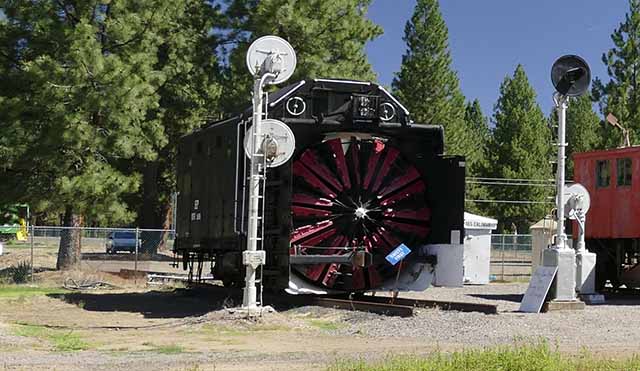
Southern Pacific Railroad, SPMW 206, Leslie Rotary Snow Plow
Built by the Cooke Works, American Locomotive Company, March 1925. Built as a coal fired steam Rotary, but converted to oil at the Sacramento, Ca. Shops before entering service in May 1925. This is a leslie designed plow with the very successful revolving wheel. Assigned to Eugene, OR until retired and donated to Train Mountain by the Union Pacific in September 2001.
As built, this plow was equipped with a steam boiler and two cylinder steam engine to power the wheel through a large bull gear. Oil and water was carried in a tender trailing the plow.
In 1958, the plow was converted to electric power with the car body being rebuilt to house the updated equipment. The wheel was turned by four electric motors housed within the car body. The electricity was provided by a former locomotive converted into a power plant coupled to the rear.
This plow's wheel could spin up to 150 rpm throwing snow a considerable distance from the track. Depending on which way the wheel was spinning determined which side the snow was thrown.
This out fit, as was the steam powered version, was pushed by a trailing locomotive. Forward speed for plowing varied depending on depth and density of the snow, generally a slow walk to 8 mph.
- (6) "JORDAN" SPREADER SP SPMW #4047
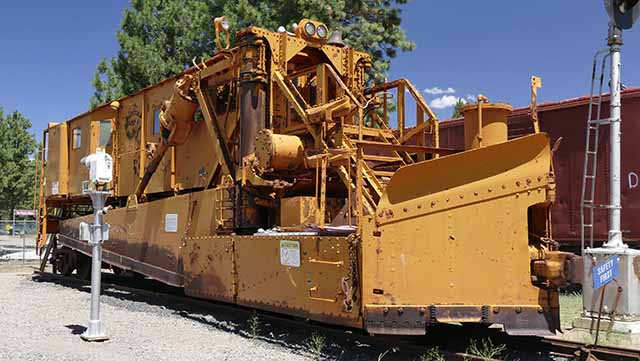
Southern Pacific Railroad, SPMW 4047, Type "A" Jordon Spreader.
Built in July 1929 by the O.F. Jordan Co, East Chicago, Indiana, car number_______.
Rebuilt in 1953 at the SP's Sacramento, Ca. General Shops which enlarged the cab, added an air compressor plus other appliance up grades. Assigned to Oakridge, OR. until retirement and donated to Train Mountain in 2001 by Union Pacific Railroad.
Spreaders were originally invented for track work uses which included, but not limited to cutting and clearing drainage ditches, spreading ballast and removing sand blown over the tracks. They later came to be used to remove snow on single tracks, provided it was not too deep, and also on double track to push accumulated snow onto an adjacent track so that a Rotary Snow Plow could remove it.
Employee Special Instructions give the maximum speed for a spreader at 35 mph on main tracks and 25 MPH for branch lines. When working, the spreader, which was not bi-directional, would be shoved forward by a trailing locomotive at speeds up to 8 mph depending on the depth of snow or other material. - (5) FLANGER SP SPMW #322

Southern Pacific Railroad, SPMW 322 Snow Flanger
Built December 1928 at the SP's Sacramento, Ca General Shops. Last saw service at Oakridge, Or. before retirement and donation in 2001 to Train Mountain by the Union Pacific Railroad.
When snow fall was light, the flanger was put to work. The flanger has two steel blades that are lowered between the rails. Air cylinders inside moves the blades. One blade throws snow to one side of the track while the other blade does just the opposite. The snow is removed from between the rails before it becomes a build up of ice, thus possibly derailing a train.
The springs have been removed from the trucks to prevent the flanger from moving up and down while plowing with the blades lowered. If the flanger had the springs, the blades could drop deep enough to damage the track structure or derail the flanger.
The SP flangers are not bi-directional and were pulled by a locomotive with a maximum speed for plowing restricted to 40 MPH.
Trackside were half chevrons warning when to raise the blade to prevent hitting switches, crossings or other obstructions between the rails. The two flags on top indicated if the blades were lowered or raised. - (1) SNOW SPREADER WEYCO #031
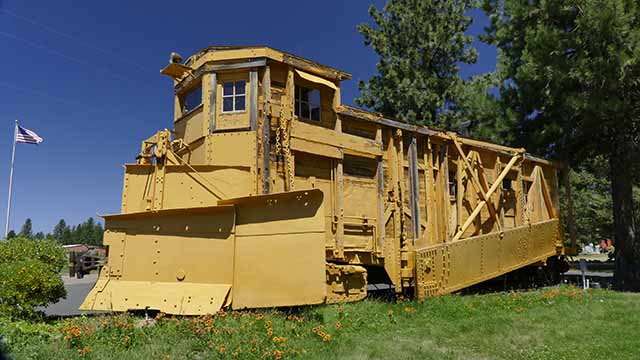
Weyerhauser Snow Spreader # 034 - (YELLOW)
A type of maintenance equipment, utilizing various ploughs, wings and blades, designed to remove snow
Snow Removal Collection
- (11) TANK CAR ACFX #6613
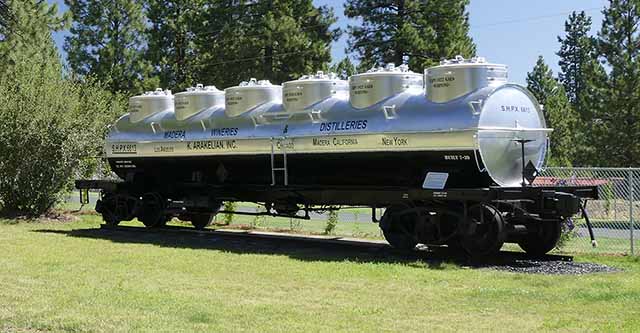
6-Compartment Wine Car - (Silver)
Built in 1939. Each compartment holds 1,000 gallons of wine.
Restored in 2015 - (14) Weyerhauser TANK CAR WTCX #41
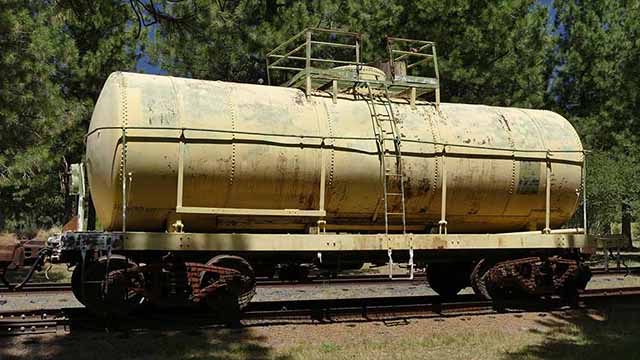
Tank Car
Tank Car Collection
TANK CAR DC&E #2018
TANK CAR DC&E #2019
TANK CAR DC&E #2020
TANK CAR WTCX #42
TANK CAR WTCX #43
- (15) LOGGING FLAT CAR WX #59919
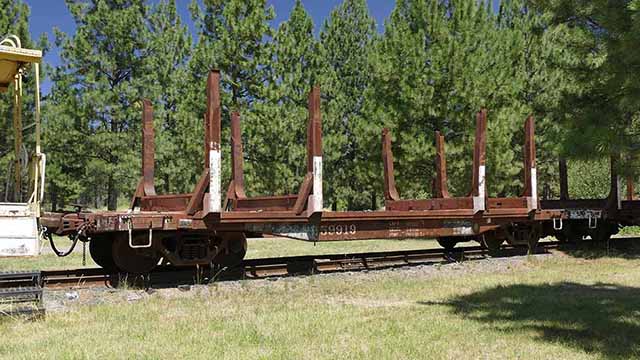
3 Log Flat Cars
Pieces of railroad rolling stock that consists of open, flat decks on four or six wheels or a pair of trucks. The decks can be wood or steel, and the sides of the deck can include pockets for stakes or tie-down points to secure loads. - (15) LOGGING FLAT CAR WX #59950
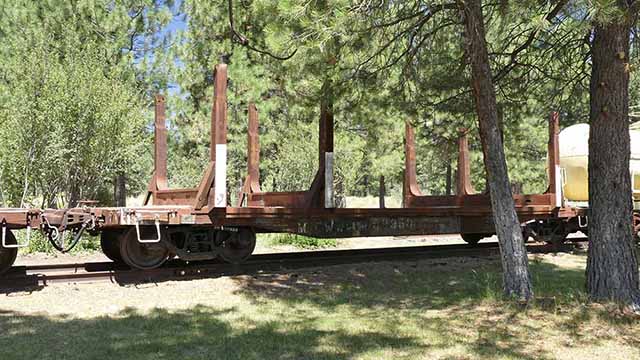
Logging Flat Car
Flat Car Collection
FLAT CAR OC&E #2011
FLAT CAR WX #803
FLAT CAR WX #812
FLAT CAR WX #59968
FLAT CAR WX #59901
FLAT CAR WTCX #1001
FLAT CAR UKN #777
FLAT CAR SP #334507
- SPEEDER UP #2531 (Quentin's MT-14)
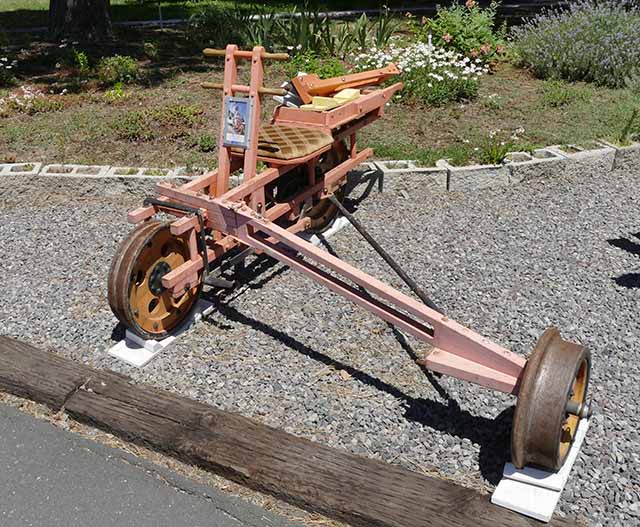
VELOCIPEDE - OC&E SPEEDER #02
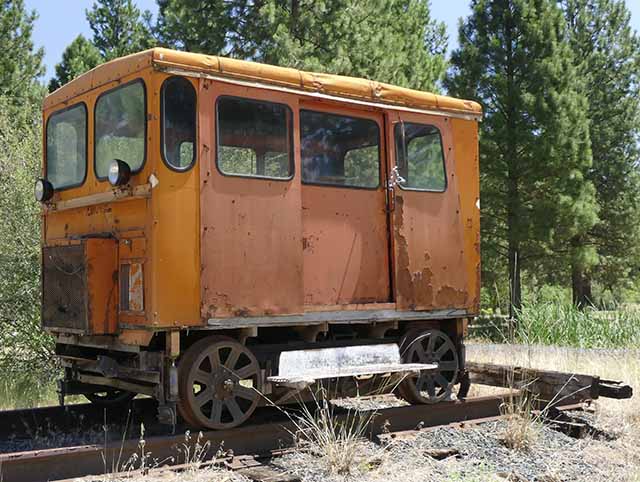
OC&E SPEEDER #02 - (3) OC&E SPEEDER #03
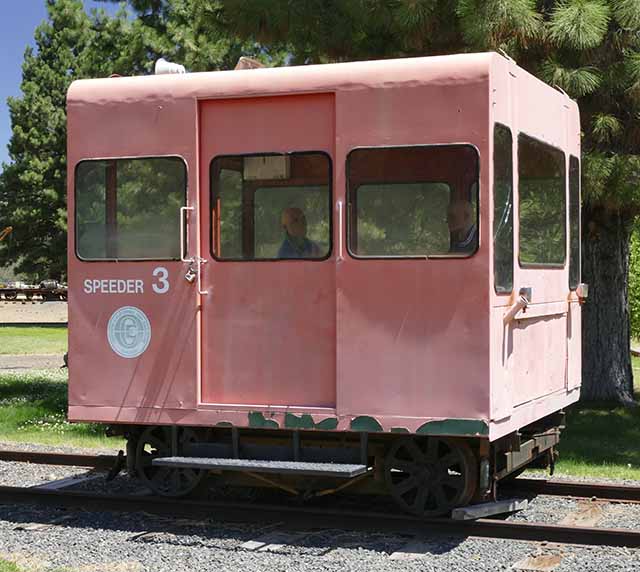
Also called railway motor car, putt-putt, track maintenance car, crew car, jigger, trike, quad, trolley or inspection car. Called a “speeder” because it’s faster than a human-powered vehicle. Two kinds: small section car for two to four people and the larger gang car for more. In 1990’s speeders were replaced with trucks. Now collected by hobbyists who refurbish them for excursions. - LN MT-19 SPEEDER (PANZIK COLLECTION)
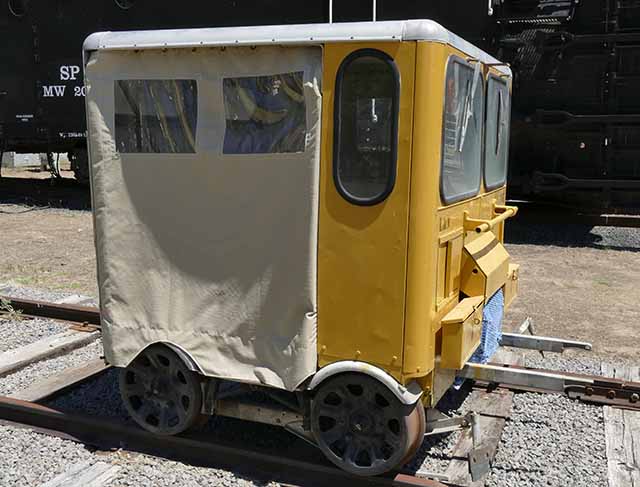
OC&E SPEEDER #03 - PUSH CARPUSH CAR
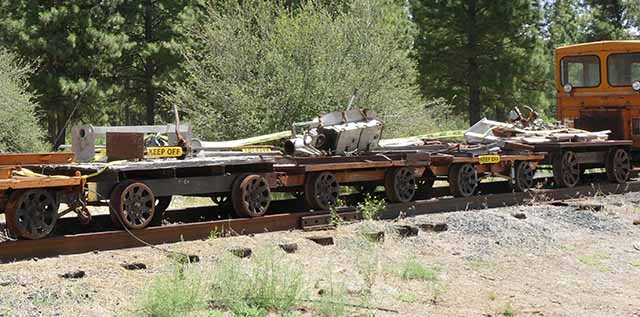
Push Carpush Car - PUSH CARJIB CRANE
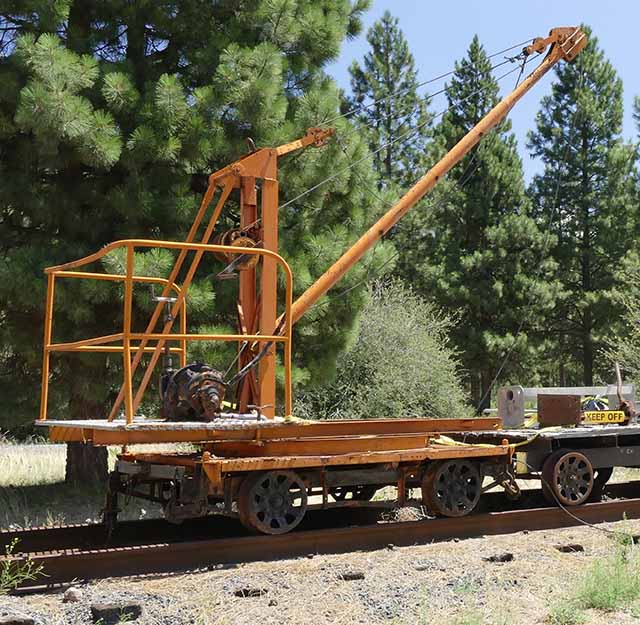
Push Carjib Crane - HAND CAR 4 WHEEL (PANZIK COLLECTION)
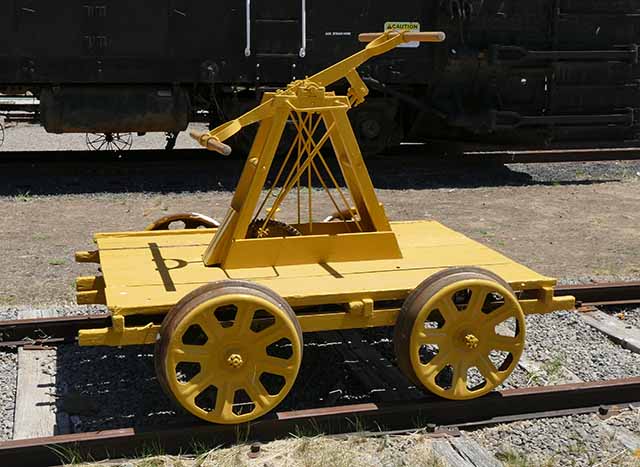
Hand Car 4 Wheel (Panzik Collection)
Speeder Collection
SPEEDER OC & E #01
